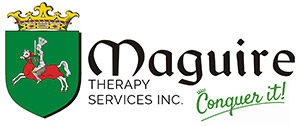A new study published in the Annals of Internal Medicine that followed 169 participants showed that physical therapy was just as effective for people suffering from spinal stenosis as surgery (1). In fact, the results point to what physical therapists have known for decades, people suffering with back pain should try physical therapy first, before considering more invasive procedures.
Spinal stenosis is a common back pain condition that affects people mostly as they age. In the spine there are canals that are formed by the vertebrae in which the spinal cord passes through the nerves branching off it. With arthritis, wear and tear, disc problems, fractures and injuries, the canals can become smaller. In fact, many of the vertebrae will change shape and even grow bone spurs into the canals due to abnormal stresses and strain on the spine. Spinal stenosis can be a very serious condition as the spinal cord and peripheral nerves can be irritated and even compressed.
Common symptoms with spinal stenosis are back pain, radiating pain to the shoulders, arms, buttocks or legs. Often numbness, severe pain and burning sensations can occur with compression. Furthermore, balance can be compromised leading to a greater tendency for falls. Many people with spinal stenosis also find it difficult to walk for 15-30 minutes without increased fatigue to the legs and even pain.
The good news is that there is a lot that can be done to support the vertebrae by building up the muscle support around the spine with the right physical therapy. In addition, by improving motion in areas of the spine with stiffness, the normal loads on the spine can be distributed better.
Tips for helping spinal stenosis back pain:
- Avoid activities that cause prolonged or repetitive extension of the spine, such as reaching behind you or overhead.
- Begin a walking program, trying to increase your distance a little more each day.
- Keep your hips strong. The gluteus muscles help to control the movement of the pelvis, which ties to your low back. Strengthening these improves postural control with walking and movement.
- Have regular physical therapy checkups with our physical therapists to analyze your spinal movement and strength. We then formulate a plan to improve both.
- Avoid prolonged sitting, especially in slouched positions such as a soft couch or reading in a recliner.
- Change positions and move when symptoms occur to alleviate irritation and pressure on the nerves.
Talk to our physical therapists today about our SPINE program and how you can help alleviate your back pain quickly, improve your flexibility and your ability to perform everyday tasks! Call Maguire Therapy Services today to learn more.
Annals of Internal Medicine


